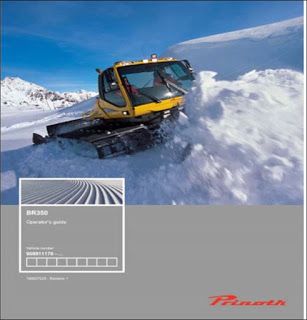In one of the more interesting cases in recent memory, the Board rendered a split decision regarding registrability of the "design" shown immediately below, for snow groomers. The mark consists of the particular pattern made in the snow by the groomers. The Board found the design not to be de jure functional, but it upheld the refusals to register based on Applicant TrackFin's failure to submit an acceptable specimen of use and on lack of acquired distinctiveness. In re TrackFin GmbH, Application Serial No. 86175623 (June 17, 2019) [not precedential] (Opinion by Judge Marc A. Bergsman).

Specimens of Use: TrackFin's original specimens of use were four photographs of the grooming machine making the claimed pattern in the snow, but the photos did not show the mark applied to the machines, or packaging therefor, or as displays associated with the goods. Subsequently, applicant submitted a user's guide (which might be acceptable), but the guide did not display the applied-for mark. Finally, TrackFin submitted a photo from a trade show exhibit, but again the photo did not display the applied-for mark, nor did TrackFin's video evidence. And so the Board affirmed the refusal based on the lack of proper specimens of use.

Applicant TrackFin's trade dress
Distinctiveness: The Board observed that the proposed mark is not a product configuration; it is groomed snow and sand resulting from use of the product identified in the application. "Nevertheless, '[i]t is the source-distinguishing ability of a mark - not its ontological status as color, shape, fragrance, word, or sign -that permits it to serve these basic purposes [source indication].'" Qualitex, 34 USPQ2d at 1163.
TrackFin sought registration under Section 2(f), thus conceding the lack of inherent distinctiveness. The Board noted that applicant had a heavy burden because the snow pattern is a nontraditional mark.
TrackFin submitted nine declarations from persons in the grooming industry, but none of them included or referenced a depiction of the applied-for mark. Their descriptions of the mark varied and the lack of clarity regarding the mark undermined the persuasiveness of the declarations. It wasn't even clear that the declarants understood that the subject matter of the mark was the design impression made in the snow.
TrackFin has "used" the mark for at least 20 years, but of course that fact alone does not establish distinctiveness. The examining attorney identified other patterns of groomed snow produced by applicant's competitors, including ones with an equally sized and spaced "corduroy" design. In light of these designs, the Board concluded that TrackFin's use of the proposed mark was not substantially exclusive.
Although TrackFin spent $100 million in advertising its vehicles over the past five years and garnered sales of $350 million, it did not show that this effort translated into consumer recognition of the track pattern as a trademark.
The Board concluded, especially in light of the similar tracks created by the products of competitors, that "consumers are not likely to perceive the snow track to be anything other than a non-source identifying design the grooming vehicle leaves behind."

TrackFin's Operator's Guide
De Jure Functonality: The Board reviewed one utility patent and two applications for snow groomer equipment but found that none of them disclosed any utilitarian advantage arising from the use of the applied-for mark. TrackFin's advertising did not tout any functional benefits of using the pattern. TrackFin conceded that there are few alternative designs, and so this factor weighed against it. Finally, there was no evidence that the design resulted from a comparatively simple or inexpensive method of manufacture, and thus TrackFin derived no competitive advantage from the design.
The Board recognized that grooming the snow makes it easier to see and to traverse, but it found no evidence that this particular pattern offered any benefit over other patterns of groomed snow. And so it concluded that the applied-for design is not de jure functional.
The content of this article is intended to provide a general guide to the subject matter. Specialist advice should be sought about your specific circumstances.
